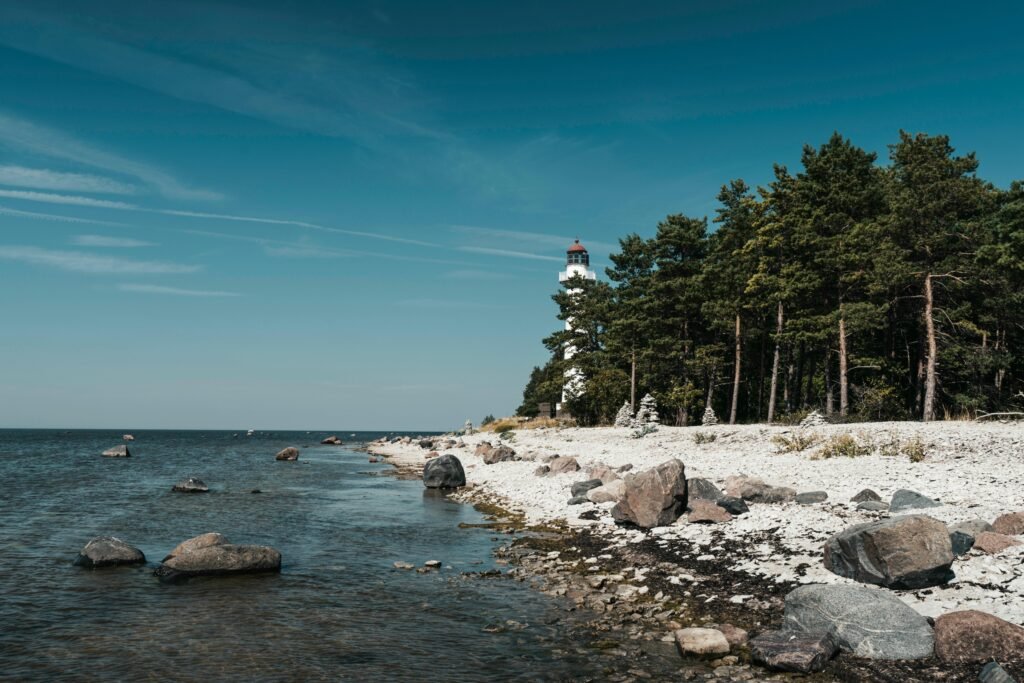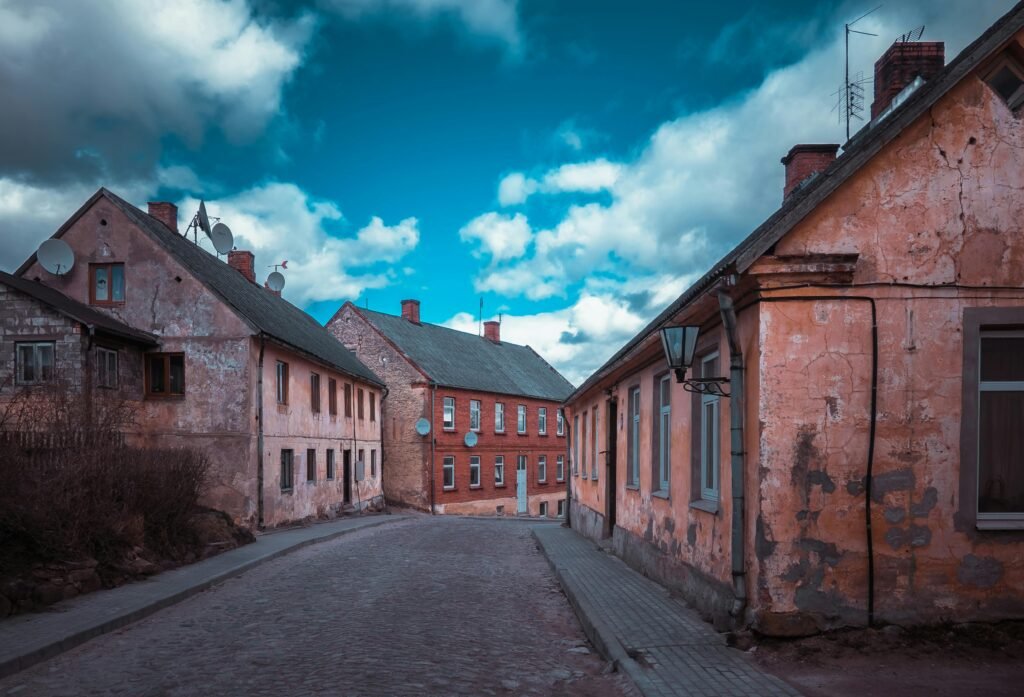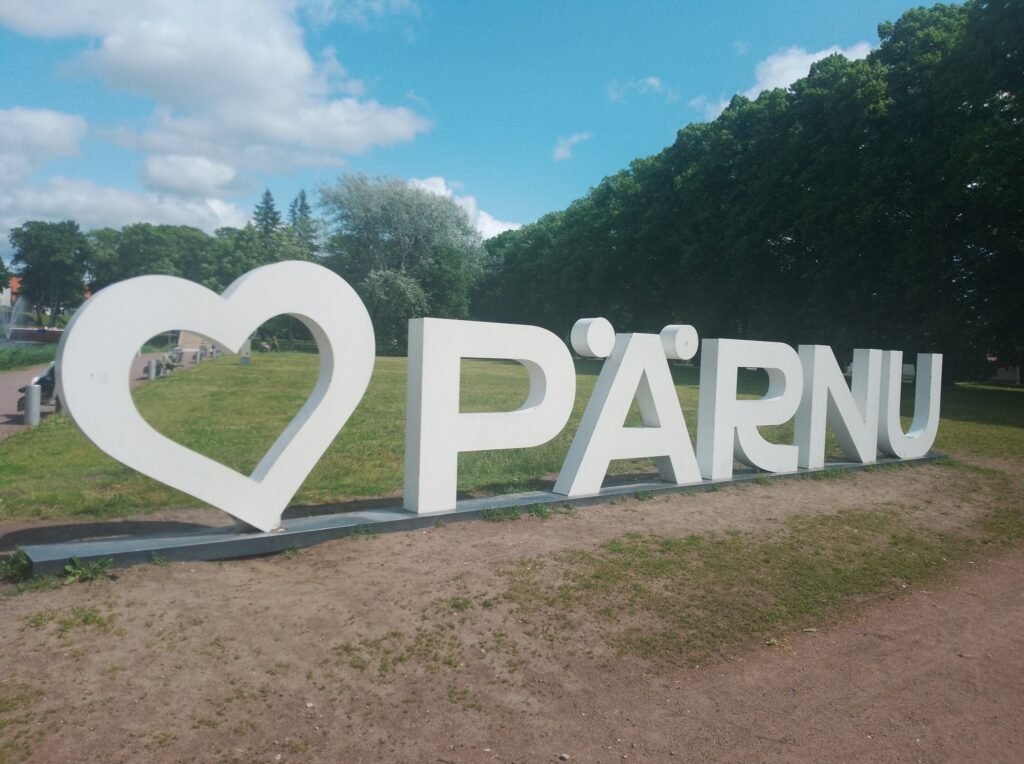Introduction to the Baltics
The Baltic region, comprising Estonia, Latvia, and Lithuania, is a treasure trove of history, culture, and natural beauty. Despite its captivating landscapes and rich heritage, this region often remains underappreciated by international travelers. The Baltics boast a tapestry of influences from various nations and epochs, evident in the eclectic architecture, diverse traditions, and vibrant customs. Historically, the area has been a crossroads for different cultures, from the ancient tribes that inhabited these lands to the more recent influences of Nordic and Slavic peoples, each leaving an indelible mark.

The stunning coastlines along the Baltic Sea feature pristine beaches, charming seaside towns, and lush national parks, offering picturesque views and opportunities for outdoor activities. Inland, travelers can explore centuries-old castles, vibrant city squares, and quaint villages that reveal a more tranquil way of life. The natural scenery ranges from serene lakes and verdant forests to the imposing cliffs and sandy shores, making the Baltics an ideal destination for nature lovers and adventure enthusiasts alike.
Unfortunately, many travelers focus their attention on more mainstream European destinations, thereby missing out on the hidden gems that the Baltic region offers. Cities like Tallinn, Riga, and Vilnius, while certainly worth a visit, often overshadow the charming small towns and unique attractions found within the countryside. Discovering these lesser-known sites allows travelers to experience the authentic essence of the Baltics, away from the bustling tourist crowds. Consequently, this blog post aims to shine a light on nine remarkable places within this often-overlooked region, inviting readers to explore the captivating stories and stunning vistas that await them in the Baltics.
Kuldīga: A Fairy-Tale Town in Latvia
Kuldīga, a picturesque town nestled in Latvia, is often cited as one of the hidden gems of the Baltics. Known for its charming cobblestone streets and historical architecture, this fairy-tale town presents a remarkable blend of cultural heritage and natural beauty. Strolling through Kuldīga, visitors are enchanted by well-preserved buildings that transport them back to a bygone era, showcasing an array of architectural styles, from Gothic to Baroque.

One of the town’s most notable landmarks is the Ventas Rumba waterfall, which holds the title of the widest waterfall in Europe. The remarkable sight of water cascading over a broad expanse is not only a natural wonder but also a perfect backdrop for picturesque photographs. Surrounding the waterfall are lush green parks, where visitors can relax and enjoy the tranquil environment. The area is particularly enchanting in the summer when the natural beauty of Kuldīga thrives.
Cultural heritage plays a vital role in Kuldīga’s identity. The town hosts various local events throughout the year, including traditional folk festivals that celebrate Latvian customs and history. These gatherings often feature live music, traditional dances, and artisanal crafts, providing an authentic experience for those visiting. Additionally, Kuldīga is home to several museums, where travelers can learn more about the region’s rich history and its importance in Latvian culture.
When it comes to culinary delights, Kuldīga offers a selection of local eateries that reflect the flavors of Latvia. Visitors should not miss tasting traditional dishes such as grey peas with ham or local fish specialties. For those with a sweet tooth, sampling traditional pastries like the “pīrāgi” is a must. Overall, Kuldīga is a captivating destination that combines stunning landscapes, cultural richness, and delightful local cuisine, making it a must-visit for anyone exploring the hidden gems of the Baltics.
Soomaa National Park: Nature’s Untamed Beauty in Estonia
Soomaa National Park, located in the southwestern region of Estonia, presents a captivating landscape characterized by vast peat bogs, meandering rivers, and dense forests. Established in 1993, the park spans over 390 square kilometers, making it one of the largest protected areas in Estonia. Its unique ecosystem is home to a diverse array of wildlife, including moose, deer, and various species of birds, which thrive in the park’s rich and varied habitats.
The park’s waterways play a significant role in shaping its character. Soomaa translates to “land of bogs,” highlighting the prominence of its wetlands and the unique floodplain that occurs during spring, known as “fifth season.” During this time, the area’s rivers overflow, creating a stunning aquatic landscape that invites visitors to explore its tranquil beauty. Canoeing is a popular activity, allowing adventurers to glide through the serene waters while soaking in the sights and sounds of nature.
In addition to canoeing, hiking is another excellent way to experience the park’s breathtaking scenery. Numerous marked trails wind through the enchanting woodlands and alongside the bogs, providing opportunities for birdwatching and photography. Whether you are a seasoned hiker or a casual walker, the diverse trails cater to various skill levels and preferences.
The best times to visit Soomaa National Park are during late spring and early autumn when the weather is mild, and the wildlife is most active. Early mornings and late afternoons offer particularly rewarding experiences for birdwatchers and nature enthusiasts alike. Essential tips for visiting include dressing in layers to accommodate changing weather conditions and bringing insect repellent, especially during the summer months when bugs can be quite numerous.
Nida: A Coastal Paradise in Lithuania
Nida, a small resort town located on the Lithuanian coast, is a jewel nestled within the stunning Curonian Spit, a UNESCO World Heritage site. This picturesque area boasts pristine beaches alongside extraordinary sand dunes, which lure visitors looking to escape the hustle and bustle of modern life. Nida’s striking landscapes feature golden sandy shores that merge gracefully with lush pine forests, creating a serene and idyllic atmosphere that enhances its appeal.
Culturally, Nida has deep-rooted connections to the region’s historical and artistic narratives. The town is renowned for its wooden architecture, characterized by traditional fishermen’s homes, which reflect the unique heritage of the Curonian Spit’s indigenous communities. One of the most notable landmarks is the Nida Lighthouse, perched nearly 60 meters above sea level and offering breathtaking panoramic views of the surrounding landscape. Furthermore, the Thomas Mann Museum, once the summer residence of the famous German writer, showcases his life and works, emphasizing the town’s cultural significance.
Visitors to Nida can indulge in a plethora of local delicacies. Renowned for its fresh fish dishes, the town offers culinary bliss for seafood enthusiasts. Restaurants along the seaside feature specialties such as smoked eel and fried perch, accompanied by locally sourced ingredients that reflect the region’s rich gastronomic heritage. Seasonal events in Nida, such as the annual Sea Festival and the Curonian Spit’s Art Week, further enliven the town, drawing tourists from near and far to experience its vibrant atmosphere.
In conclusion, Nida is not just a beach destination; it embodies a unique blend of natural beauty and cultural richness, making it an essential stop for those exploring the hidden gems of the Baltics.
Pärnu: Estonia’s Spa Capital with a Twist
Pärnu, a charming coastal town in Estonia, is often heralded as the country’s spa capital. Known for its soothing health resorts and wellness facilities, Pärnu attracts numerous visitors seeking relaxation and rejuvenation. However, beyond its reputation for spas and therapeutic treatments, the town boasts a vibrant cultural scene that remains underappreciated by many.

The arts thrive in Pärnu, with numerous galleries showcasing works from local artists. The Pärnu Museum serves as an excellent starting point for anyone interested in the town’s history, featuring exhibits that delve into the rich heritage of the region. Additionally, the annual Pärnu Film Festival draws cinephiles and creators alike, hosting a variety of international films that highlight emerging talent and diverse storytelling.
Pärnu’s festival calendar is packed with events that reflect the town’s lively culture. During the summer months, the beach town comes alive with artistic showcases, such as the Pärnu Music Festival, which attracts music lovers from afar to enjoy performances ranging from classical to contemporary styles. For those interested in local cuisine, Pärnu offers hidden gems where visitors can savor traditional dishes made from fresh, locally sourced ingredients.
One such spot is the renowned Supelsaksad Cafe, known for its delightful pastries and cozy ambiance, providing the perfect backdrop for casual dining. For those seeking a more unique wellness experience, some spas in Pärnu offer innovative treatments such as thalassotherapy, aimed at harnessing the healing powers of seawater. This combination of relaxation and cultural engagement makes Pärnu a truly multifaceted destination.
In conclusion, while Pärnu rightfully enjoys its reputation as Estonia’s spa capital, there are many hidden aspects waiting to be explored. From its dynamic art scene to its flavorful delicacies, Pärnu invites visitors to indulge in both relaxation and culture, ensuring a well-rounded experience in this beautiful seaside town.
Viljandi: The Home of Folk Music in Estonia
Viljandi, a picturesque town in Estonia, is often overlooked by tourists but offers a rich tapestry of cultural experiences, particularly in the realm of folk music. Nestled amid rolling hills and picturesque landscapes, Viljandi is renowned for its annual Viljandi Folk Music Festival, a vibrant celebration that draws artists and attendees from around the globe. This festival showcases traditional Estonian music, thereby offering a platform for both established and emerging folk musicians to perform and connect with audiences.
The town itself boasts historical significance, with landmarks such as the Viljandi Castle ruins, which date back to the 13th century. Visitors can wander through the remnants of this medieval structure while enjoying breathtaking views of the surrounding landscapes. Additionally, the nearby Viljandi Old Town features charming wooden architecture, each telling stories of the region’s storied past. The vibrant community life is palpable in Viljandi, where local residents actively partake in preserving and promoting their cultural heritage through various artistic endeavors.
Food enthusiasts will find an array of local culinary delights to enjoy in Viljandi. Traditional Estonian dishes are served in several cozy cafes and restaurants spread throughout the town. From hearty meats to flavorful potato dishes, the menus often highlight seasonal ingredients and local flavors, offering an authentic taste of Estonian culture. Visitors are encouraged to try regional specialties, which are integral to the community’s identity and serve as a link between the past and present.
Preserving folk traditions is essential for Viljandi and its residents. The strong emphasis on folk music, arts, and crafts within the community strengthens social bonds and fosters a sense of belonging. By visiting Viljandi, one not only discovers a hidden gem in the Baltics but also participates in the vital act of keeping the region’s rich cultural legacy alive.
Tartu: The Student City with a Historic Soul
Tartu, often overshadowed by Estonia’s capital, Tallinn, is a city that embodies both historical richness and contemporary vibrancy. Recognized as Estonia’s intellectual hub, Tartu boasts a profound academic heritage, primarily attributed to the prestigious University of Tartu, founded in 1632. This institution is one of the oldest universities in Northern Europe and has played a pivotal role in shaping the intellectual landscape of the region. Its historic buildings, such as the stunning neoclassical main building and the renowned University Botanical Gardens, offer a glimpse into its educational legacy.
The city’s charm is further accentuated by its well-preserved architecture, which includes a mix of medieval, baroque, and modern styles. Strolling through Tartu’s cobbled streets, visitors can admire the iconic Tartu Town Hall and the unique wooden houses that speak to the city’s past. This blend of history and dynamic student life creates an atmosphere that is lively yet reflectively serene, making it a top destination for travelers and scholars alike.
For food enthusiasts, Tartu presents an array of culinary experiences that highlight traditional Estonian cuisine. Local eateries such as the legendary “Kohvik Wabadus” offer a range of options from hearty traditional dishes to innovative modern interpretations. The Tartu Market is another must-visit, where visitors can explore a plethora of stalls showcasing locally sourced produce, smoked fish, and unique homemade pastries. Here, one can truly immerse themselves in the flavors of Estonia and appreciate the country’s gastronomic diversity.
Overall, Tartu stands out as a hidden gem in the Baltics, brimming with history, academic prestige, and a vibrant food scene. This city invites exploration, making it a compelling case for those seeking to uncover the lesser-known treasures of Estonia.
Sventoji: A Secluded Beach Retreat in Lithuania
Sventoji, a tranquil coastal village situated along the shores of the Baltic Sea, is often overshadowed by its more popular Lithuanian counterparts such as Palanga and Nida. However, this hidden gem offers a serene escape for those seeking a quieter beach experience. The village is characterized by its pristine, sandy beaches that stretch along the coastline, inviting visitors to bask in the sun or take leisurely strolls amidst the gentle waves.
One of the key features of Sventoji is its deep-rooted fishing traditions, which are evident in the charming small boats that can be seen bobbing on the water. Visitors can immerse themselves in the local culture by interacting with fishermen and learning about the traditional methods still practiced today. This authentic experience not only enriches one’s understanding of the region’s heritage but also connects travelers to its rich history.
For nature enthusiasts, Sventoji offers a variety of hidden nature trails that wind through pristine landscapes. These trails showcase the area’s natural beauty, leading adventurers through lush forests, picturesque dunes, and along the tranquil banks of nearby rivers. Exploring these paths reveals an abundance of flora and fauna, making it an ideal spot for birdwatching and appreciating the unspoiled environment.
Food lovers will also find delight in Sventoji, as the village harbors numerous dining opportunities where fresh seafood can be savored. Local restaurants proudly serve dishes prepared from the catch of the day, ensuring that visitors can experience authentic tastes. Additionally, various market stalls provide fresh produce and regional specialties, offering a glimpse into the local culinary scene. For those seeking a peaceful beach retreat, Sventoji provides the perfect balance of natural beauty, cultural richness, and gastronomic experiences. Its secluded charm makes it a must-visit destination for travelers looking to uncover the hidden gems of the Baltics.
Saaremaa: Estonia’s Largest Island Getaway
Saaremaa, Estonia’s largest island, offers an idyllic retreat known for its diverse landscapes, rich history, and authentic local experiences. Stretching over 2,673 square kilometers, this Baltic gem is characterized by its limestone cliffs, lush forests, serene beaches, and quaint villages, making it an ideal getaway for nature enthusiasts and history buffs alike.
One of the most striking features of Saaremaa is its captivating natural beauty. The island is home to numerous cycling paths that allow visitors to explore its picturesque scenery at a leisurely pace. Cycle through fragrant pine forests, along the rugged coastline, and past charming rural landscapes, providing an excellent opportunity to absorb the tranquility and charm of this hidden gem. The island’s unique geological formations, such as the Kaali meteorite crater, further add to its allure.
For history enthusiasts, Saaremaa is a treasure trove of ancient sites, including the iconic Kuressaare Castle, a well-preserved medieval fortress offering insights into the island’s past. Visitors can also explore traditional windmills, which are emblematic of the island’s agricultural heritage. These windmills not only showcase Saaremaa’s historical significance but also serve as a picturesque backdrop for photography, making it a delightful experience for visitors.
Culinary adventurers will find a rich tapestry of flavors on Saaremaa. Sample local delicacies such as smoked fish, traditional black bread, and the island’s famed cheese, all of which are often sourced from local producers. The island also hosts cozy restaurants and cafés where you can savor hearty dishes, complemented by stunning views of the surrounding landscape.
For accommodation, Saaremaa offers a range of options from charming guesthouses to luxury hotels. The seaside resorts make for a perfect base to start your island explorations while enjoying the stunning Baltic Sea vistas. Saaremaa promises a memorable escape, blending natural beauty, historical charm, and local gastronomy into a satisfying getaway.
Conclusion: Discovering the Unseen Baltics
The Baltics, often overshadowed by their more widely recognized counterparts in Europe, host an array of hidden gems just waiting to be explored. From the serene shores of Klaipeda to the enchanting landscapes surrounding Lahemaa National Park, each destination contributes uniquely to the rich tapestry of Baltic culture and heritage. These locations not only offer breathtaking views but also provide an authentic experience of local traditions, cuisine, and hospitality.
As we have uncovered throughout this blog post, the lesser-known destinations in the Baltics, such as the charming town of Haapsalu and the rugged coastline of Jurkalne, present opportunities to immerse oneself in nature while also experiencing the vibrant history and folklore of the region. The stunning architecture, quaint streets, and friendly locals found in these hidden treasures foster a deep connection to the rich past and lively present of the Baltic states.
Encouraging readers to venture beyond the typical tourist paths is vital in discovering the true essence of the Baltics. The experiences waiting in these overlooked areas are as rewarding as they are varied, ranging from tranquil retreats to adventurous explorations. Whether you are seeking solace in nature or engaging with the local community, the Baltics offer a multitude of options that cater to all preferences.
Therefore, we invite you to plan your trip to these lesser-known destinations. Relish the opportunity to create memorable stories that go beyond the popular attractions. With so much to explore, the hidden gems of the Baltics are truly waiting to be discovered, and your adventure starts with a single step off the beaten path.





